
Vintage Definition | Antique Definition
by mandeesears
The terms "antique" and "vintage" have caused confusion to more than one shopper. Vintage Definition | Antique Definition will try to clear the muddy waters.
Vintage or Antique
What do they really mean?
Shopping vintage or antique shopping is fun! But, the terminology can be confusing...
In the last few years the word "Vintage" has become highly popular as a descriptive term for any older item. The increasing use of the term and rather broad manner in which people use it has muddied the waters as far as a definition is concerned.
Likewise, the term "antique" has been used out of its' original context for quite some time now, especially since the invent of selling items online.
They are pretty words and can grab the attention of a potential customer but use out of context just creates chaos in the word of pre-owned goods.
This article will not be dealing with pre-owned clothing or the collecting of pre-owned clothing. That niche has its' own guidelines that can differ from other types of collectibles.
This article will be referring mostly to old or pre-owned furniture, glassware, dishes, etc... and the secondary market for them.
Kovels' Antique Guide
 |
| Kovels' Antiques & Collectibles Price Guide 2011: America's Most Au... Only $2.61 |
Vintage Definition
What the heck does "Vintage" mean anyway?
"Vintage" is a term that is widley over-used and misunderstood.
Originally, as far as age is concerned, it referred to items that can be linked to a certain era or time period like Vintage Post-War (WWII), Vintage 1950's or Vintage Mid-Century Modern. It was meant to describe the best of an era or at least to associate items with certain qualities or items of certain types to a specific era.
Today, "Vintage" is used to describe almost anything from cars to dishes to furniture to advertisments and more.
A good rule of thumb to use is, if an item that is less than 20 years old should not be referred to as "vintage". A time period or era needs to evolve, produce items, symbols or trends that will later define it in history. Items less than 20 years of age are unlikely to meet these guidelines.
Have fun shopping vintage!
Antique Definition
And what qualifies as a true "Antique"?
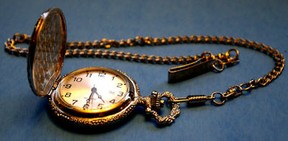 In 1930, the US Customs office passed a law that referred to antiques as "anything produced prior to 1830" when mass production became common. This law was to help determine if an item would be allowed in the United States duty-free (no tax).
In 1930, the US Customs office passed a law that referred to antiques as "anything produced prior to 1830" when mass production became common. This law was to help determine if an item would be allowed in the United States duty-free (no tax).
In 1966, due to the law being outdated, it was changed. It simply read that an item needed to be 100 years old or older to determine if it was an antique. The age of the item was used soley as the guide to tax or not to tax.
In 1993, the law evoleved even more. It still read that an antique was to be 100 years of age or older but the following conditions were added:
- If the item has been repaired or restored, it must retain the original character
- Repairing an item using modern manufactered items is allowable as long as the original character is not changed and
- Any antique that is more than 50% repaired or restored is no longer considered to be an antique and will be subject to duty tax.
Source: US Customs and Border Protection Heading 9706
While this modern definition is rather in depth, a lot of dealers and serious collectors are purists and follow, at least, the 75 to 100 year old guide.
"Vintage" items today, have the opportunity to become tomorrow's antiques. Now you can enjoy antique shopping better informed.
Vintage vs Antique
Which term do you use and why?
I'm a purist -- Antique is the term I prefer.
 Albert Quick
on 04/13/2015
Albert Quick
on 04/13/2015
"Vintage" means year of the wine, stretching it out one could say vintage means the year of ???? a date should be used to clarify, ie: vintage 1950. With 60 years of antique collecting/selling under my belt, I came across a legal article in a court case dealing with a civil suit and the use of certain words describing an article being sold. The court ruled that the term "antique" pertained to an item over 100 years old, they went further and stated a collectable was any item under 100 years and an "Heirloom" was any item over 50 years but not reaching 100. The court stated that automobiles and firearms were exempt from the 100 year mark, automobiles were considered an antique at 25 years and firearms, with a few exceptions, was any manufactured prior to 1898 making one today at 117 years to be an antique. I hate the word "vintage" when pertaining to any item other than wine and I hesitate buying from a seller who uses that term as I look at them as someone who does not know what they are talking about......
 Ngyuyen Maanam Pho-Myang
on 01/04/2015
Ngyuyen Maanam Pho-Myang
on 01/04/2015
Vintage is for wine and not intended for anything else.
 petunia
on 08/14/2011
petunia
on 08/14/2011
I prefer antique simply because that's how my mother taught me way back in the 60's. After reading your article, I guess she was ahead of the new law by the US. :) The "vintage" term I have never quite understood, so was thankful for your explanation.
Vintage is more fun!
 DianaGrant
on 11/08/2011
DianaGrant
on 11/08/2011
I use "Vintage" as an all-rounder as it is more inclusive - I could call an antique "vintage", but I couldn't necessarily call something vintage "antique". I tend to use the word Vintage on my websites, like happynutritionist, but I have certainly seen the word "Antique" used for items which are probably only 75 years old. I'm not sure whether we have the legal definition in English law.
 happynutritionist
on 08/18/2011
happynutritionist
on 08/18/2011
I use the term vintage a lot...and it is always for things over 20 years old. People are accustomed to seeing the word or searching using the word, and I do most of my selling online, so it is one that I use often. I have sold a few antique things, then I use both terms in the listing title:-) Nice educational page, thank you.
Caveat Emptor
"Buyer Beware"
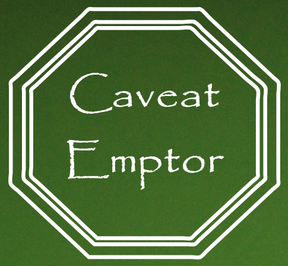 The age old adage is still true today. Most items people collect are old. This means they were pre-owned and used. No matter what you collect -- Viking Glass, Fostoria, vintage toys, antique furniture -- as a buyer, live by the Latin phrase: Caveat Emptor or "Let the buyer beware".
The age old adage is still true today. Most items people collect are old. This means they were pre-owned and used. No matter what you collect -- Viking Glass, Fostoria, vintage toys, antique furniture -- as a buyer, live by the Latin phrase: Caveat Emptor or "Let the buyer beware".
Unfortunatly, not everything for sale in person or on the web is authentic. You have to use your own judgement and live with your decision. Ask for help from any experts you know but, ultimately, it's your hard earned money you will spend. Make sure the item is really what is being advertised.
I have seen dealers as well as normal people selling items that are mislabeled. I, personally, like to believe it is from lack of knowledge more than from them attempting to mislead a prospective customer.
Reference Guides to Vintage, Antiques and Collectibles
Know how to identify your collectible
 | Warman's Antiques & Collectibles 2011 Price Guide (Warman's Antiques & Collectibles Price Guide) Readers of '"Warman's" Antiques & Collectibles 2011 Price Guide', will find a fresh 21st-century perspective that honestly assesses the market and looks to the best categories ... Only $28.0 |
 | Warman's Antiques & Collectibles 2012 Price Guide (Warman's Antiques and Collectibles Price ... The flagship of the Krause antiques & collectibles line, Warman's has been a trusted resource since 1948. Now featuring in-depth articles and "future of the market" reports ... |
 | Kovels' Antiques & Collectibles Price Guide 2011: America's Most Authoritative Antiques Annual! ... The 43rd edition of America's leading price guide on antiques and collectibles, featuring all new actual prices in 700 categories and with more than 2,500 photographs Kovels' ... Only $2.61 |
 | Antique Trader Antiques & Collectibles 2011 America's #1 Selling Price GuideFor more than 25 years, Antique Trader Antiques & Collectibles Price Guide has been the most trusted source for antiques and collectibles ... Only $45.8 |
Remember...
when coming up with a dollar value of vintage or antique items...
Values of antiques and vintage items are only a guidline -- a ballpark figure -- a starting point.
There is a difference between "worth", market value and sentimental value of any item. All of these values can have a dollar amount attached by the owner and they can vary widely.
If you own a Hoosier cabinet that used to belong to your grandmother, there is sentimental value attached that does not necessarily equate to market value. The condition, production year and a host of other variables will dictate a market value.
Bottom line is, if you want to sell something, the value is only as much as a buyer is willing to pay. For instance, a book can tell you your vintage Coca-Cola serving tray from the 1940's is worth $100. However, if you can't find a buyer willing to pay that, then the actual market value is lower.
What do you collect?
Anything?
More Resource Articles About Vintage and Antique Items
"Vintage with a Twist"
Our Family Booth Space
Vintage With A tWist
Antiques, Collectibles and Restyled Home Decor
You might also like
How To Sell AntiquesA few suggestions on how to sell your antiques and collectibles in a brick an...
Explaining Old Book ValuesJust because a book is old does not make it extremely valuable. Age does not ...


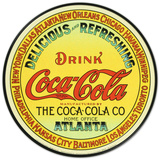
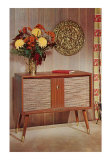

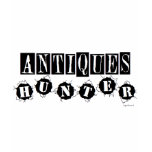






 Starting with Nothin' and Ending up with Somethin' | My Journey Onlineon 04/23/2012
Starting with Nothin' and Ending up with Somethin' | My Journey Onlineon 04/23/2012
 Patio Decorating Ideas | Color Schemeson 03/30/2012
Patio Decorating Ideas | Color Schemeson 03/30/2012
 Patio Decorating Ideas | Tropical Paradise Patioon 03/26/2012
Patio Decorating Ideas | Tropical Paradise Patioon 03/26/2012
 Patio Decorating Ideas | Tuscan Garden Themeon 03/14/2012
Patio Decorating Ideas | Tuscan Garden Themeon 03/14/2012

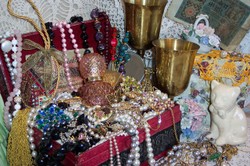

Was this helpful?
I always did think of antique as very old and vintage as from an era gone by, as you've said. You have a very impressive site - I am going back for a longer look now.
Very helpful. Especially the term vintage, which seems to mean so many different things. Seems that I am vintage- double time!
Yes it was helfpful and informative - thanks
It is confusing. I've found when selling or buying items from an online site, it's helpful to see if the site its own policy. Do they have their own definition of what they mean by 'vintage' and other terms? Yes, still good idea to check before you buy based on terminology like this.
Great explanation on the use of these terms.
Here in the Netherlands (where I live) it is the other way round - vintage (and retro) for clothes, second-hand for the rest (furniture, books etc)
Good question! "second-hand" is still used but mostly to refer to clothing. There are a few thrift stores that say second hand or used furniture but "vintage" just sounds more appealing.
What about second-hand? No longer used?